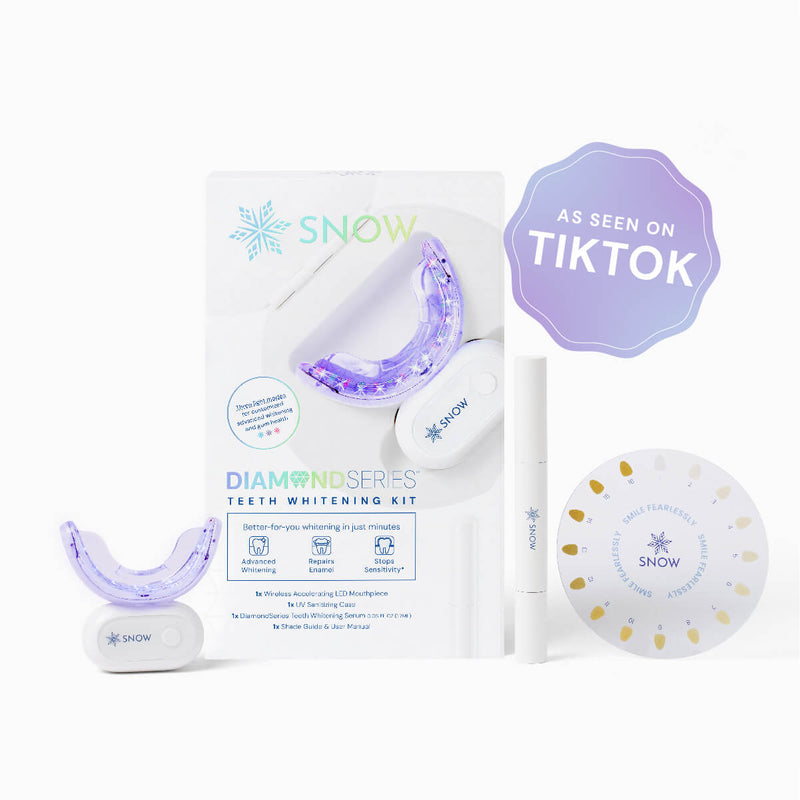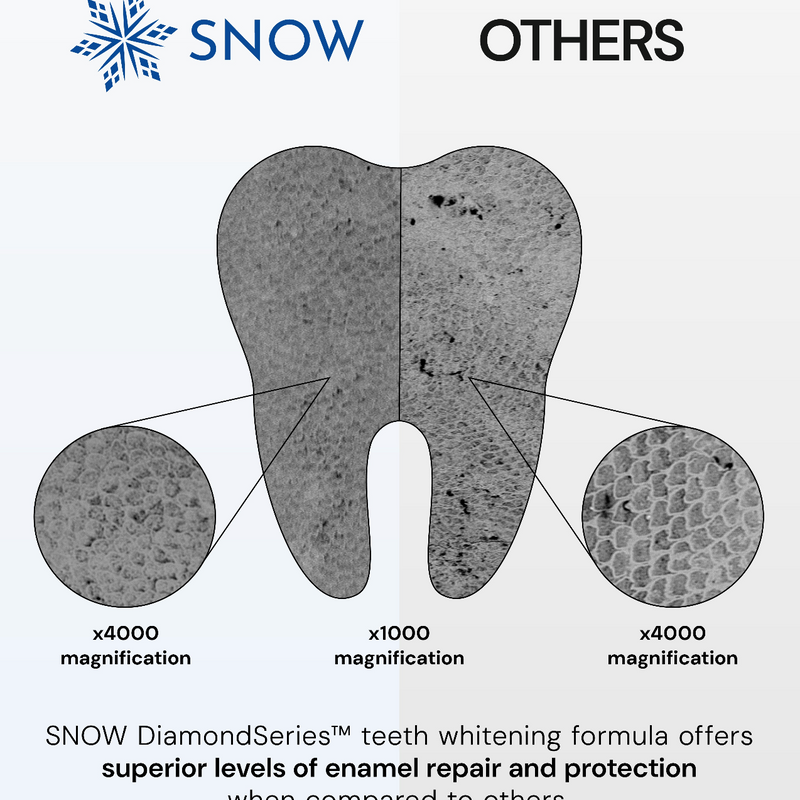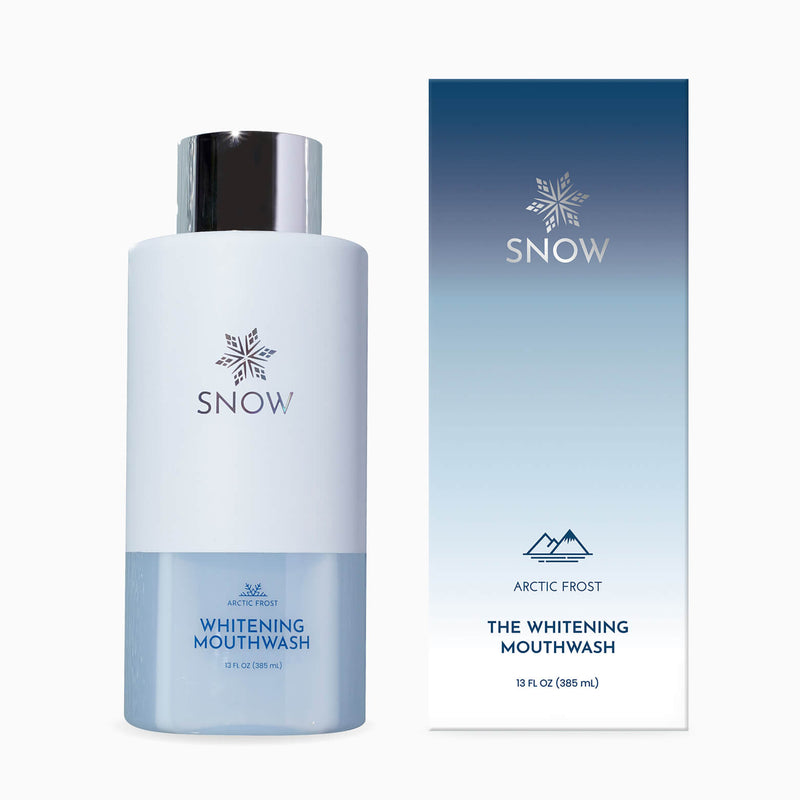Are you supposed to rinse toothpaste after brushing your teeth? While it might seem like a no-brainer, dental experts suggest otherwise.
This article explores common teeth-brushing practices, including whether to rinse after brushing, the effects of rinsing immediately, and how to enhance your oral hygiene routine. We will also debunk common myths like the effectiveness of hard-bristle brushes and occasional flossing.
Let's dive into the details to uncover the best practices for keeping your smile healthy.
What this article covers:- Should You Rinse After Brushing?
- Should You Leave Toothpaste on Your Teeth?
- Effects of Rinsing Right After Spitting
- Rinsing After Flossing
- Changing Your Brushing Habits
- Guide to Brushing Your Teeth
- Potential Risks of Not Rinsing After Brushing Teeth
- Common Teeth-Brushing Myths
Should You Rinse After Brushing?
Many of us have grown up with the habit of rinsing our mouths immediately after brushing our teeth.
However, dental experts suggest that this practice might not be the most effective way to maintain the benefits of the active ingredients in your toothpaste.
Should You Leave Toothpaste on Your Teeth?
should you leave toothpaste on your teeth? The answer is yes. To maximize benefits, consider spitting out the toothpaste without rinsing your mouth afterward. For those who find the taste or texture of leftover toothpaste unpleasant, a good compromise is to spit out the excess and avoid rinsing with water or mouthwash immediately.e.
For those looking to elevate their oral care routine, SNOW's Magic teeth whitening strips provide a quick and effective solution for achieving a brighter smile.
With patented P3 Technology®, these strips not only enhance whitening but also protect your enamel, making them a convenient addition to your daily routine.
Effects of Rinsing Right After Spitting
Based on our observations, rinsing immediately after brushing can diminish the effectiveness of toothpaste. Ingredients like nano hydroxyapatite help in the remineralization of enamel and the prevention of tooth decay.
When you rinse right after brushing, you dilute and wash away the fluoride that should stay on your teeth to provide ongoing protection.

To further support your whitening efforts, SNOW's Arctic Frost teeth whitening mouthwash can be a perfect complement.
This mouthwash not only freshens breath but also helps maintain a bright smile by targeting surface stains, ensuring you get the most out of your oral care routine.
Rinsing After Flossing
It's common to rinse to remove any dislodged debris after flossing. However, we recommend using mouthwash instead of plain water to enhance the protective effects on your teeth.
If you prefer not to use mouthwash, consider rinsing lightly with a small amount of water to avoid washing away too much fluoride from your brushing routine.
For an easy, daily whitening boost, consider incorporating SNOW's teeth whitening foam into your regimen. This versatile foam can be used alongside your toothpaste or applied directly to teeth, gradually brightening your smile without disrupting your routine.
Changing Your Brushing Habits
Adopting better brushing habits can improve your oral health. It is best to brush your teeth twice a day with a soft-bristled toothbrush. This helps remove plaque and food particles that can lead to cavities and gum disease.
It's also important to replace your toothbrush every three to four months to ensure that you're using fresh bristles that can properly clean your teeth.
Guide to Brushing Your Teeth
Begin by placing your toothbrush at a 45-degree angle to your gums and use short, back-and-forth strokes to clean the outer, inner, and chewing surfaces of your teeth. Be thorough, making sure to brush each tooth and spend about two minutes brushing each time.
Don't forget to brush your tongue, as it can harbor bacteria that cause bad breath. Use a gentle sweeping motion from the back of your tongue to the front to remove bacteria.
Floss daily to remove plaque and food particles between your teeth that your toothbrush can't reach.
How much toothpaste should you use? A pea-sized amount is sufficient for adults, while children should use even less to prevent swallowing excess fluoride.
To complement your routine, SNOW's teeth whitening powder offers a natural approach to teeth whitening.
Potential Risks of Not Rinsing After Brushing Teeth
Surprisingly, the risks are minimal, and the benefits might outweigh them.
However, not rinsing might not be ideal for everyone. Some people may experience a build-up of residue that could feel uncomfortable or lead to minor irritation if not adequately managed.
If you are using toothpaste with higher fluoride content or other active ingredients, there may be a slight risk of overexposure if you frequently swallow the residue.
Nonetheless, these risks are generally considered low, and the practice of not rinsing is often recommended to maximize the preventive benefits of toothpaste.
To ensure that your enamel remains strong while gradually whitening your teeth, SNOW's teeth whitening toothpaste is an excellent daily option.
Curious which is better, fluoride vs fluoride free toothpaste? While fluoride toothpaste is popular for its cavity-fighting properties, some people prefer fluoride-free options. Our research indicates that nano-hydroxyapatite is a potent alternative for strengthening enamel.

Common Teeth-Brushing Myths
There are many misconceptions about brushing your teeth that could be harming your oral health instead of helping it. We'll break down these myths and explain the best practices for keeping your teeth clean and healthy.
Hard Bristle Brushes Remove More Plaque
Our findings show that many people believe that hard-bristle toothbrushes are more effective at removing plaque because they seem to provide a "deeper clean." However, this is not true. A soft-bristled toothbrush is gentle on your gums and enamel while still removing plaque.
It's the brushing technique, rather than the firmness of the bristles, that plays the most significant role in maintaining oral hygiene.
Is it safe to use whitening toothpaste everyday? Generally, yes, as long as you choose a product designed for daily use and follow the manufacturer's instructions.
Flossing Occasionally Is Sufficient
Another common myth is that flossing occasionally is enough to maintain healthy gums. The truth is that daily flossing is crucial for removing plaque and food particles from between your teeth, areas that your toothbrush can't reach.
Inconsistent flossing allows plaque to build up, leading to gum disease and cavities. Daily flossing disrupts the biofilm of bacteria that forms between teeth, helping to prevent oral health issues.
If you find traditional floss challenging to use, consider alternatives like interdental brushes or water flossers, but ensure you clean between your teeth daily.
Conclusion
Are you supposed to rinse toothpaste after brushing? Many people believe that rinsing is necessary to feel clean, but dental research suggests that skipping the rinse can actually increase the protective effects of fluoride.
We've delved into the common practices and myths surrounding teeth brushing, like whether hard-bristle brushes are more effective and if occasional flossing is sufficient.
Take control of your oral hygiene by incorporating these best practices into your routine. Make the switch to SNOW today and experience the difference.
If you want to learn more, why not check out these articles below:
- Is Fluoride Free Toothpaste Good
- Types of Toothpaste
- Are Toothpaste Tablets Effective
- Does Whitening Toothpaste Work
- How Long Does a Tube of Toothpaste Last
- Does Toothpaste Kill Bacteria
- How Long Does It Take for Whitening Toothpaste to Work?
- How Does Sensitive Toothpaste Work?
- What Does Fluoride Do in Toothpaste?
- How Does Whitening Toothpaste Work?
- Does Fluoride Toothpaste Whiten Teeth
- Does Purple Toothpaste Work on Crowns?
- What Toothpaste Whitens Teeth?
- What Happens If You Use Too Much Toothpaste?
























